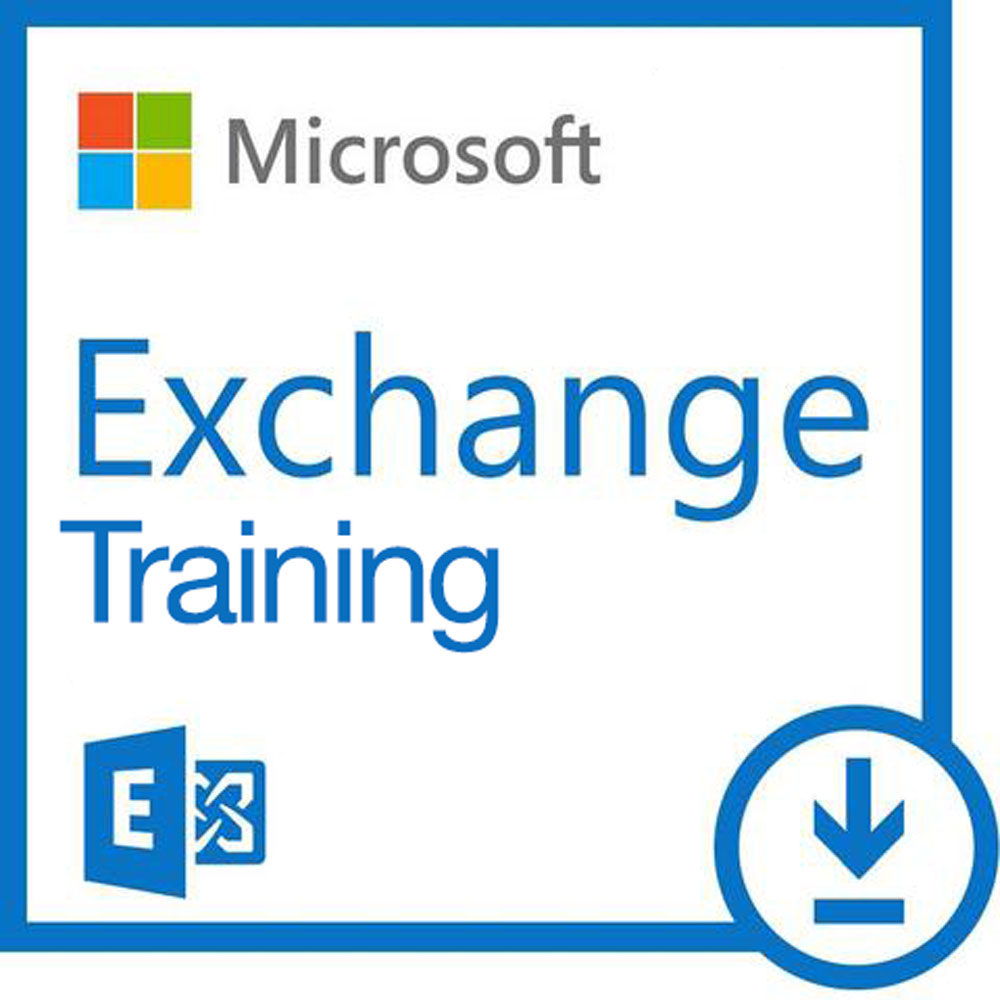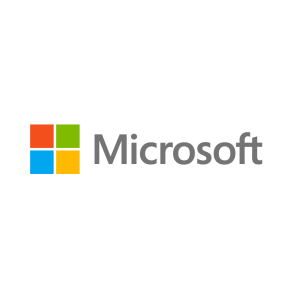Description
About this On Demand Course
The Microsoft on-demand product is an integrated on-line training experience that includes video, labs, exercises, text and knowledge checks. Attendees experience all of this through an on-demand course player.
What’s included?
- Access to the official Microsoft Video on Demand Course for 90 days from the point of first access, allowing you to start and stop when you need to.
- Lab access for 3 months from start of access.
- Digital edition of the Microsoft Official Curriculum (DMOC) manual for reference throughout your course. All DMOC come with fresh editions so your courseware will always be up to date.
- MCT Support via our Microsoft Training Support Yammer Group (you will be invited to the group after registration)
The content is based on the same official courseware we use in our instructor-led training, and videos feature engaging experts hand-selected by Microsoft. Unlike other on-demand offerings that offer simulated labs, MOC On-Demand gives you a live, real-time environment for hands-on training.
About this course
This course teaches IT professionals how to administer and support Exchange Server 2016. Students will learn how to install Exchange Server 2016, and how to configure and manage an Exchange Server environment. The course covers how to manage mail recipients and public folders, including how to perform bulk operations using Exchange Management Shell. Students also will learn how to manage client connectivity, message transport and hygiene, how to implement and manage highly available Exchange Server deployments, and how to implement back up and disaster recovery solutions.
The course also teaches students how to maintain and monitor an Exchange Server 2016 deployment. In addition, students will learn how to administer Exchange Online in an Office 365 deployment.
Prerequisites
- Before attending this course, students must have:
- A minimum two years of experience administering Windows Server, including Windows Server 2012 R@ or Windows Server 2016.
- A minimum two years’ experience working with active Directory Domain Services (AD DS). A minimum two years of experience working with name resolution including Domain Name System (DNS).
- Understanding of TCP/IP and networking concepts.
- Understanding of Windows Server 2012 R2 or later, and AD DS, including planning, designing, and deploying.
- Understanding of security concepts such as authentication and authorization.
- Understanding of Simple Mail Transfer Protocol (SMTP).
- Working knowledge of public key infrastructure (PKI) technologies, including Active Directory Certificate Services (AD CS).
Audience profile
This course is primarily intended for people aspiring to become enterprise-level messaging administrators for Exchange Server 2016. IT generalists and help-desk professionals who want to learn about Exchange Server 2016 might also take this course. Students taking this course are expected to have at least two years of experience working in the IT field—typically in the areas of Windows Server administration, network administration, help desk, or system administration. They are not expected to have experience with previous Exchange Server versions.
The secondary audience for this course includes IT professionals who take this course as preparation material for exam 70-345: Designing and Deploying Microsoft Exchange Server 2016, or as part of the requirement for the MCSE: Microsoft Exchange Server 2016 certification
At course completion
- After completing this course, students will be able to:
- Perform deployment and basic management of Exchange Server 2016.
- Manage Exchange Server 2016.
- Create and manage various recipient objects in Exchange Server 2016.
- Use Exchange Management Shell to create and manage various recipient objects in Exchange Server 2016, and perform various tasks to automate Exchange management procedures.
- Configure client connectivity to Exchange Server 2016, and manage Client Access services.
- Implement and manage high availability.
- Implement backup and disaster recovery for Exchange Server 2016.
- Configure message transport options.
- Configure message hygiene and security options.
- Implement and manage Exchange Online deployments.
- Monitor and troubleshoot Exchange Server 2016.
- Secure and maintain Exchange Server 2016.
Course Outline
Module 1: Deploying Microsoft Exchange Server 2016
This module describes the key features and enhancements in Exchange Server 2016. The module also describes the deployment requirements and options for implementing Exchange Server 2016.
Lessons
- Overview of Exchange Server 2016
- Requirements and deployment options for Exchange Server 2016
Lab: Deploying Microsoft Exchange Server 2016
- Evaluating requirements and prerequisites for an Exchange Server 2016 installation
- Deploying Exchange Server 2016
Module 2: Managing Microsoft Exchange Server 2016 servers
This module describes the built-in management tools that you can use to manage maintain and maintain Exchange Server 2016. The module also explains the features and functionality of a Mailbox server role and procedures for configuring a Mailbox server.
Lessons
- Exchange Server 2016 management
- Overview of the Exchange 2016 Mailbox server
- Configuring Mailbox servers
Lab: Configuring Mailbox servers
- Creating and configuring mailbox databases
Module 3: Managing recipient objects
This module describes the types of recipient objects in Exchange Server 2016, and explains how to manage these objects. The module also describes how to manage address lists and policies on the Mailbox server role.
Lessons
- Exchange Server 2016 recipients
- Managing Exchange Server recipients
- Configuring address lists and policies
Lab: Managing Exchange Server recipients and public folders
- Managing recipients
- Managing public folder mailboxes
Lab: Managing Exchange Server email address lists and policies
- Managing email-address policies
- Managing address lists and address book policies
Module 4: Managing Microsoft Exchange Server 2016 and recipient objects by using Exchange Management Shell
This module provides an overview of the Exchange Management Shell, and describes how to use it to manage Exchange Server 2016 configuration and recipient objects.
Lessons
- Overview of the Exchange Management Shell
- Managing Exchange Server 2016 by using Exchange Management Shell
- Managing Exchange Server 2016 by using Exchange Management Shell scripts
Lab: Managing Exchange Server and recipient objects by using Exchange Management Shell
- Using Exchange Management Shell to manage recipients
- Using Exchange Management Shell to manage Exchange Server
Module 5: Implementing client connectivity
This module describes how to configure and manage Client Access Services in Exchange Server 2016. The module also explains the options for configuring client connectivity, Microsoft Outlook on the web, and mobile messaging.
Lessons
- Configuring client access services in Exchange Server 2016
- Managing client services
- Client connectivity and publishing of Exchange Server 2016 services
- Configuring Outlook on the web
- Configuring mobile messaging on Exchange Server 2016
Lab: Deploying and configuring client access services on Exchange Server 2016
- Configuring certificates for client access
- Configuring client access options
- Configuring custom MailTips
Lab: Deploying and configuring client access services on Exchange Server
- Configuring Exchange Server 2016 for Outlook
- Configuring Outlook on the web
- Configuring Microsoft Exchange ActiveSync
Module 6: Managing high availability in Exchange Server 2016
This module describes the high availability options built into Exchange Server 2016. The module also explains how to configure high availability for Mailbox databases and Client Access services.
Lessons
- High availability on Exchange Server 2016
- Configuring highly available mailbox databases
- Configuring high availability of Client Access services.
Lab: Implementing DAGs
- Creating and configuring a database availability group
Lab: Implementing and testing high availability
- Deploying a high availability solution for client access services
- Testing the high availability configuration
Module 7: Implementing disaster recovery for Microsoft Exchange Server 2016
This module describes the backup and recovery options in Exchange Server 2016 and explains the factors you must consider when you use these options.
Lessons
- Implementing Exchange Server 2016 backup
- Implementing Exchange Server 2016 recovery
Lab: Backing up Exchange Server 2016
- Backing up Exchange Server 2016
Lab: Implementing disaster recovery for Exchange Server 2016
- Restoring Exchange Server 2016 data
- Restore an Exchange Server DAG member (optional)
Module 8: Configuring and managing message transport
This module provides an overview of message transport, and describes how to configure message transport. The module also describes how to configure transport rules and DLP policies to manage message transport.
Lessons
- Overview of message transport
- Configuring message transport
- Managing transport rules
Lab: Configuring message transport
- Configuring message transport
- Troubleshooting message delivery
- Configuring a disclaimer transport rule
- Configuring a DLP policy for financial data
Module 9: Configuring antivirus, antispam, and malware protection
This module describes the key features and functionality of an Edge Transport server role in Exchange Server 2016. The module also explains how to configure message security by implementing an antivirus and antispam solution.
Lessons
- Deploying and managing an Edge Transport server for message security
- Implementing an antivirus solution for Exchange Server 2016
- Implementing an antispam solution for Exchange Server 2016
Lab: Configuring message security
- Configuring and testing EdgeSync
- Configuring antivirus, antispam, and malware protection features on Exchange Server 2016
After completing this module, students will be able to:
- Deploy and manage an Edge Transport server role for message security.
- Implement an antivirus solution for Microsoft Exchange Server 2016.
- Implement an antispam solution for Exchange Server 2016.
Module 10: Implementing and managing Microsoft Exchange Online deployments
This module describes the key features of Exchange Online and Office 365. The module also describes how to manage and migrate to Exchange Online.
Lessons
- Overview of Exchange Online and Office 365
- Managing Exchange Online
- Implementing the migration to Exchange Online
Lab: Managing Exchange Online
- Managing Exchange Online
Module 11: Monitoring and troubleshooting Microsoft Exchange Server 2016
This module describes how to monitor and troubleshoot Exchange Server 2016. The module explains how to collect and analyze performance data for various Exchange Server recipients and objects. The module also describes how to troubleshoot database issues, connectivity issues, and performance issues.
Lessons
- Monitoring Exchange Server 2016
- Troubleshooting Exchange Server 2016
Lab: Monitoring and troubleshooting Exchange Server 2016
- Monitoring Exchange Server
- Troubleshooting database availability
- Troubleshooting client access services
Module 12: Securing and maintaining Exchange Server 2016
This module describes how to maintain and update an Exchange Server organization. The module explains how to plan and configure administrative security and administrative auditing in Exchange Server 2016.
Lessons
- Securing Exchange Server with role-based access control (RBAC)
- Configuring audit logging on Exchange Server 2016
- Maintaining Exchange Server 2016
Lab: Securing and maintaining Exchange Server 2016
- Configuring Exchange Server permissions
- Configuring audit logging
- Maintaining updates on Exchange Server 2016.


